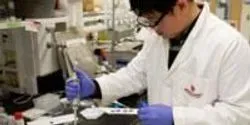environmental science

Long before Emory University’s innovative new water reclamation facility began harnessing the power of nature to clean and recycle wastewater for non-potable uses on campus, the system was already serving as a living laboratory.

As the Earth warms and glaciers all over the world begin to melt, researchers and public policy experts have focused largely on how all of that extra water will contribute to sea level rise.

A University of Washington (UW) survey of pollution and other impurities in North American snow required researchers to find sites with undisturbed snow far from any city or major road – in other words, a recipe for getting stranded by the side of a cold, lonely road.

The southeastern United States is a natural laboratory for scientists studying how chemicals emitted by human activities and trees interact with each other and affect air quality and climate. A new study has found that certain emissions from cars and coal-fired power plants promote processes that transform naturally occurring emissions from trees into organic aerosols. Organic aerosols make up a substantial fraction of ambient particulate matter (PM) that can affect climate, air quality and human health.

Women exposed to high levels of fine particulate matter specifically during pregnancy—particularly during the third trimester—may face up to twice the risk of having a child with autism than mothers living in areas with low particulate matter, according to a new study from Harvard School of Public Health (HSPH). The greater the exposure, the greater the risk, researchers found. It was the first U.S.-wide study exploring the link between airborne particulate matter and autism.

The Taj Mahal’s iconic marble dome and soaring minarets require regular cleaning to maintain their dazzling appearance, and scientists now know why. Researchers from the United States and India are pointing the finger at airborne carbon particles and dust for giving the gleaming white landmark a brownish cast.












